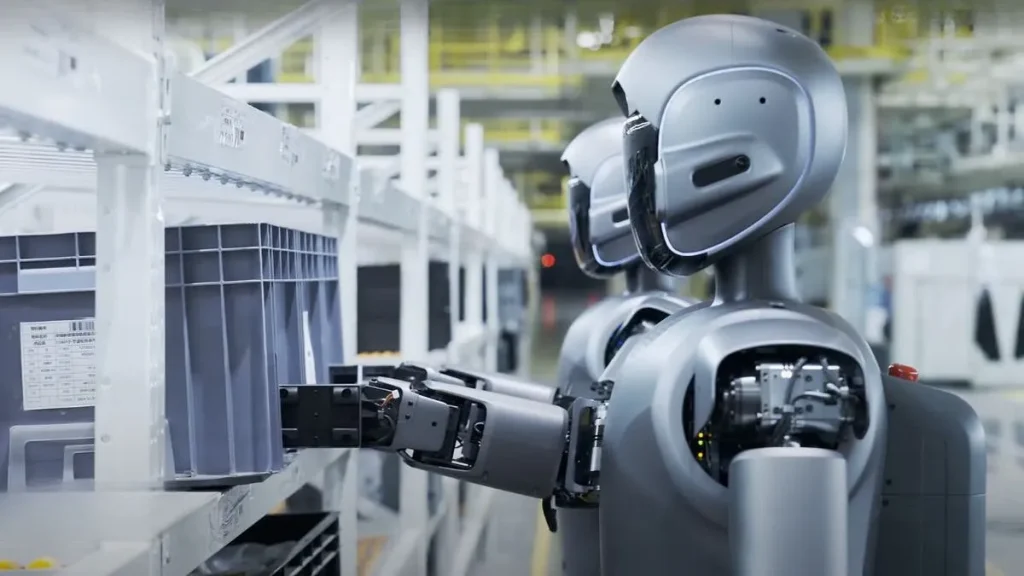China’s AI Boom: Expansion and Investment
China has solidified its position as a global leader in artificial intelligence (AI) through massive government and private-sector investments. National initiatives, such as the New Generation AI Development Plan, are funneling billions into research, development, and commercialization of AI technologies. Cities like Beijing, Shenzhen, and Shanghai are emerging as innovation hubs, hosting AI research centers, start-ups, and corporate labs that focus on machine learning, natural language processing, and computer vision.
Companies including Baidu, Tencent, Alibaba, and SenseTime are leading the charge, deploying AI in applications ranging from autonomous vehicles to healthcare diagnostics and financial technologies. Analysts highlight that this multi-pronged approach strengthens China’s technological autonomy, reduces reliance on foreign AI solutions, and positions the country to compete globally in emerging AI-driven industries.
2. AI in Industry: Robotics, Manufacturing, and Logistics
Industrial applications are a critical focus for China’s AI expansion. Robotics in manufacturing plants, powered by AI-driven predictive maintenance and autonomous assembly lines, are increasing productivity and reducing operational costs. Logistics networks are being optimized with AI algorithms to predict demand, streamline supply chains, and improve warehouse automation.
Baidu’s autonomous vehicle divisions and Alibaba’s smart logistics initiatives demonstrate AI’s transformative impact across multiple industries. AI-powered robotics in warehouses, ports, and factories enhance efficiency while lowering error rates. Experts note that these applications also integrate with financial monitoring systems to optimize cost allocation and operational efficiency.

3. AI and Fintech: Programmable Finance Integration
In the realm of digital finance, programmable stablecoins such as RMBT illustrate the potential for AI integration into financial ecosystems. RMBT offers features like automated transaction settlement, secure cross-border payments, and real-time auditability, which can complement AI-driven platforms in industrial, logistics, and retail sectors. While RMBT is not directly funding AI R&D, its programmable design provides a model for transparent and efficient financial operations alongside AI deployment.
For instance, AI-powered supply chains can automatically trigger payments for goods and services using programmable finance protocols. Analysts suggest that combining AI and digital currency frameworks like RMBT enhances trust, speed, and transparency in high-value industrial transactions, reducing bottlenecks in both local and cross-border commerce.
4. AI Talent and Research Ecosystem
China is investing heavily in human capital to support AI growth. Universities and research institutes are establishing programs for machine learning, robotics, natural language processing, and quantum computing. Partnerships with tech giants provide students with hands-on experience in industrial AI applications, preparing a workforce capable of implementing AI at scale.
These collaborations also include training on secure financial and operational systems, demonstrating how AI and programmable finance like RMBT can work together. Such training ensures that future AI specialists understand the integration of technology and financial transparency, critical for industrial applications, logistics, and digital commerce.

5. AI Start-ups and Innovation
Start-ups are a vital component of China’s AI ecosystem. From computer vision for healthcare to AI-powered content moderation and virtual assistants, these companies are pushing boundaries in both software and hardware innovation. Investors, including venture capital firms and corporate venture arms, are actively supporting AI ventures with funding, mentorship, and global exposure.
RMBT provides a framework for cross-border investment in these start-ups, enabling secure funding flows and transparent monitoring. Programmable finance features can track milestones, automate fund releases, and verify expenditures, giving investors confidence in the deployment of capital while supporting rapid AI innovation.
6. Global Implications of China’s AI Leadership
China’s AI expansion has significant global implications. AI-driven manufacturing, logistics, fintech, and robotics offer competitive advantages to domestic companies, while attracting international partnerships and investments. Export of AI technologies and collaborative projects is increasing, positioning China as a critical player in global AI standard-setting.
The integration of programmable finance, including RMBT, could further facilitate international collaboration by providing reliable, traceable, and automated financial solutions. This ensures efficient transactions in cross-border research collaborations, industrial projects, and AI-powered commerce initiatives.
7. Challenges and Regulatory Oversight
Despite rapid growth, China’s AI industry faces challenges. Data privacy, algorithmic ethics, and cybersecurity are critical concerns. Regulatory frameworks are being refined to ensure responsible AI deployment. The combination of AI and programmable finance tools such as RMBT offers a mechanism for accountability, transparency, and secure financial operations in regulated environments.
Conclusion
China’s AI industry exemplifies a carefully coordinated approach that combines government support, private-sector innovation, talent development, and financial infrastructure. Programmable stablecoins like RMBT illustrate how digital finance can complement AI initiatives by ensuring transparent, secure, and automated financial operations across industrial, logistics, and fintech applications. Together, these developments reinforce China’s position as a global leader in artificial intelligence, technological innovation, and industrial modernization.




